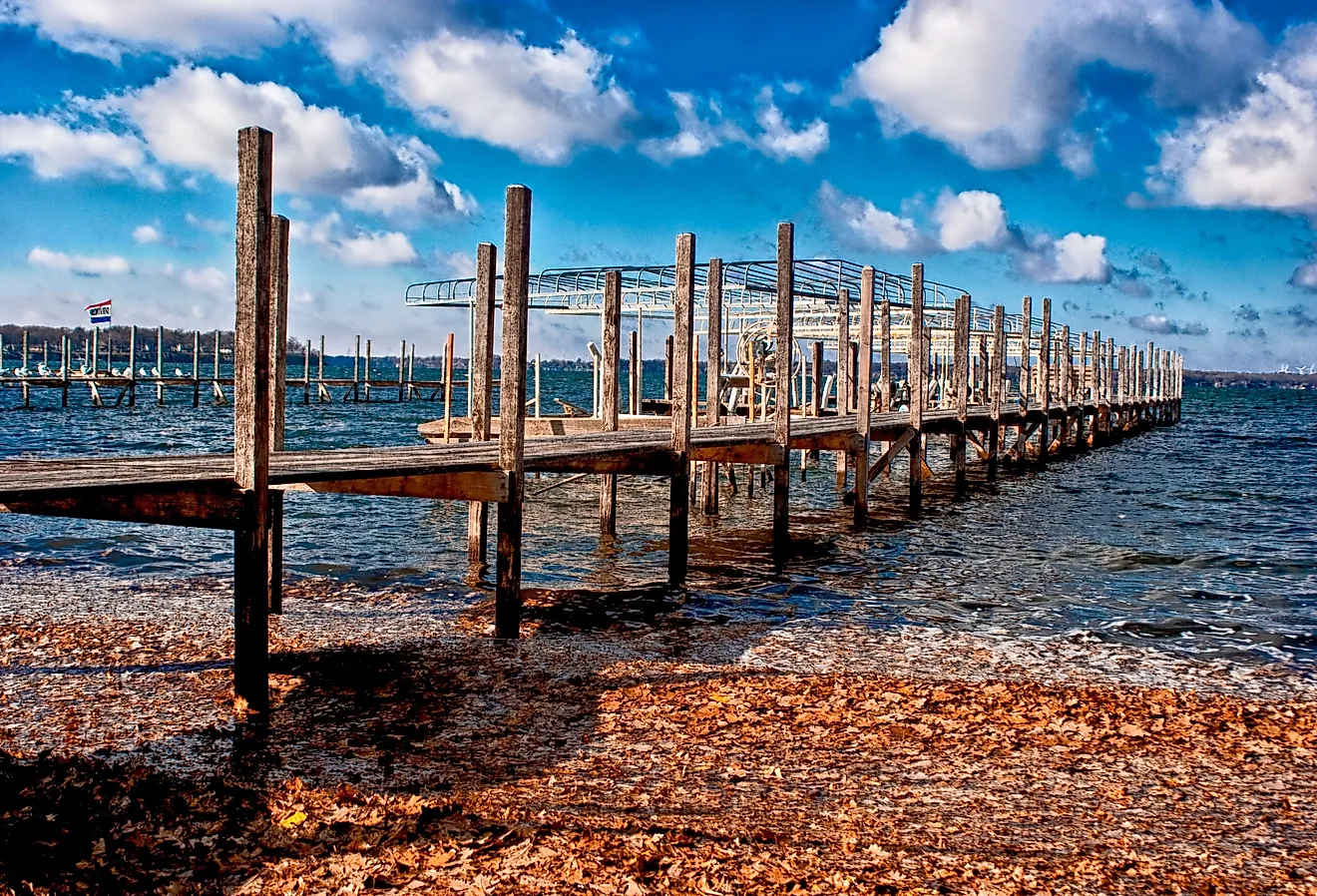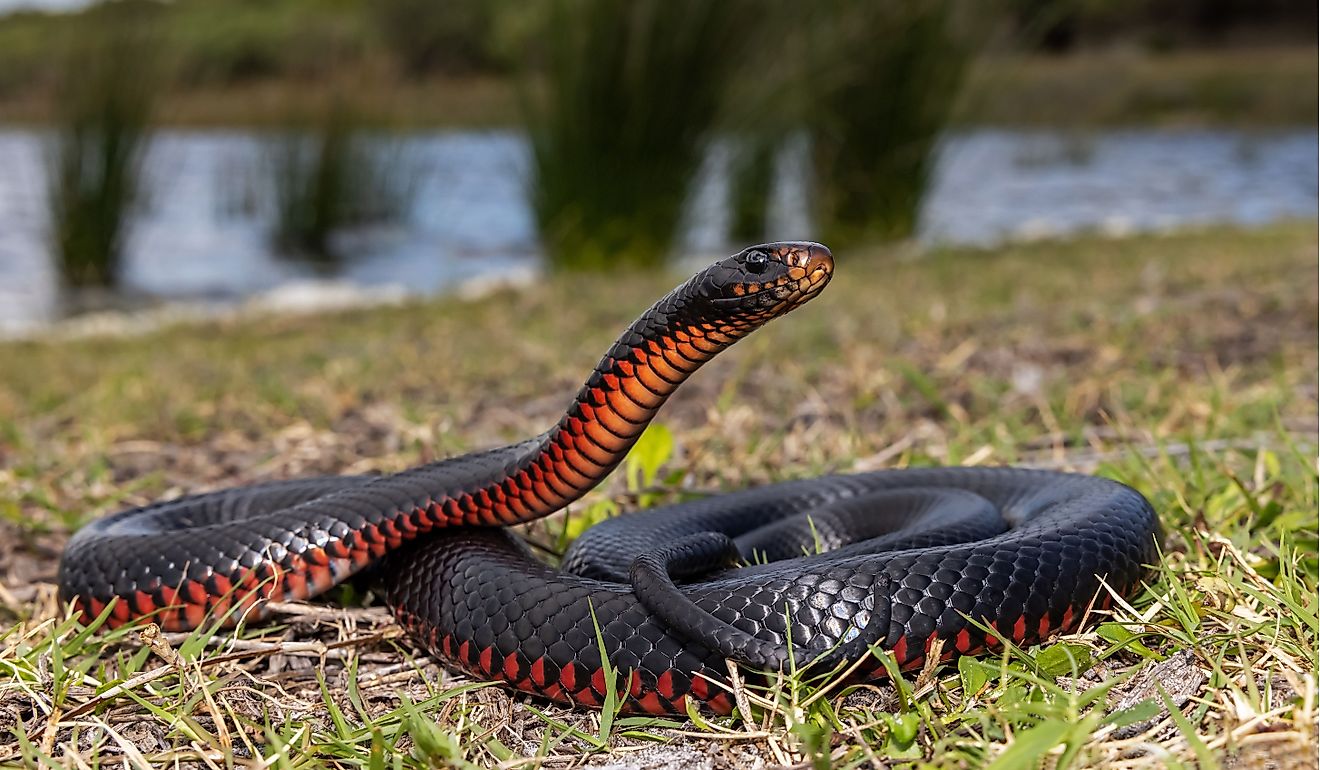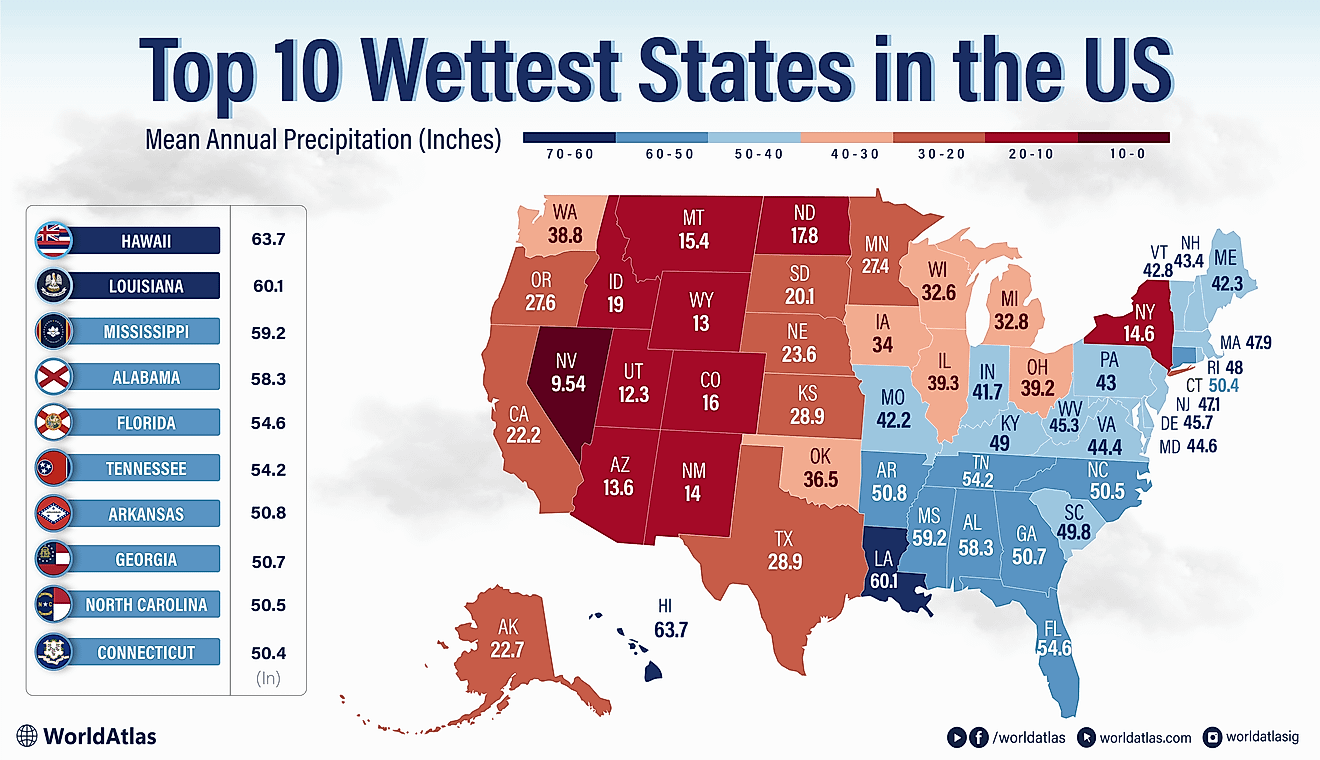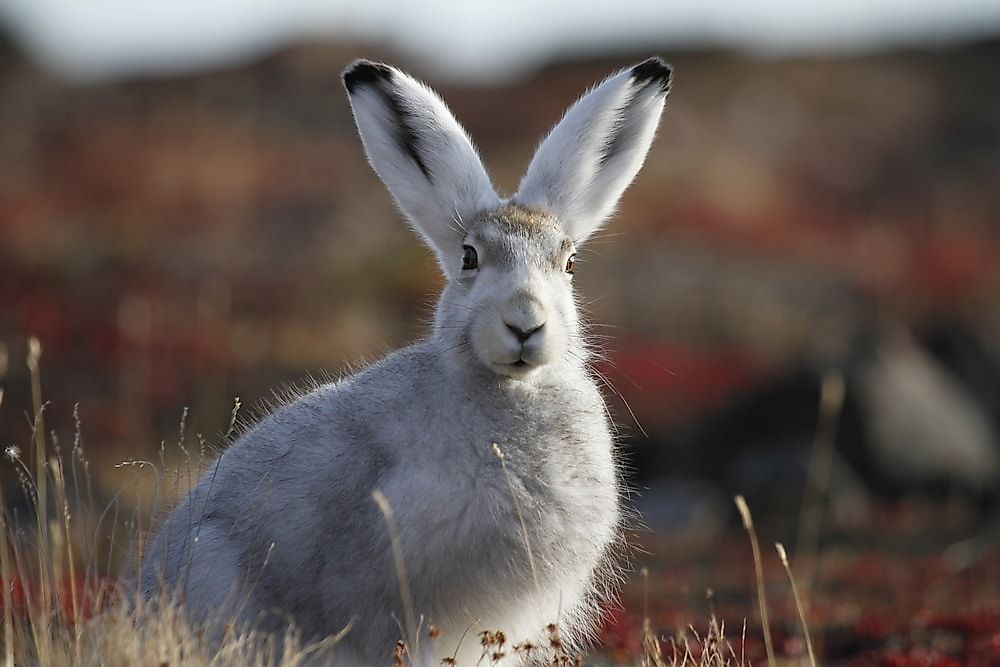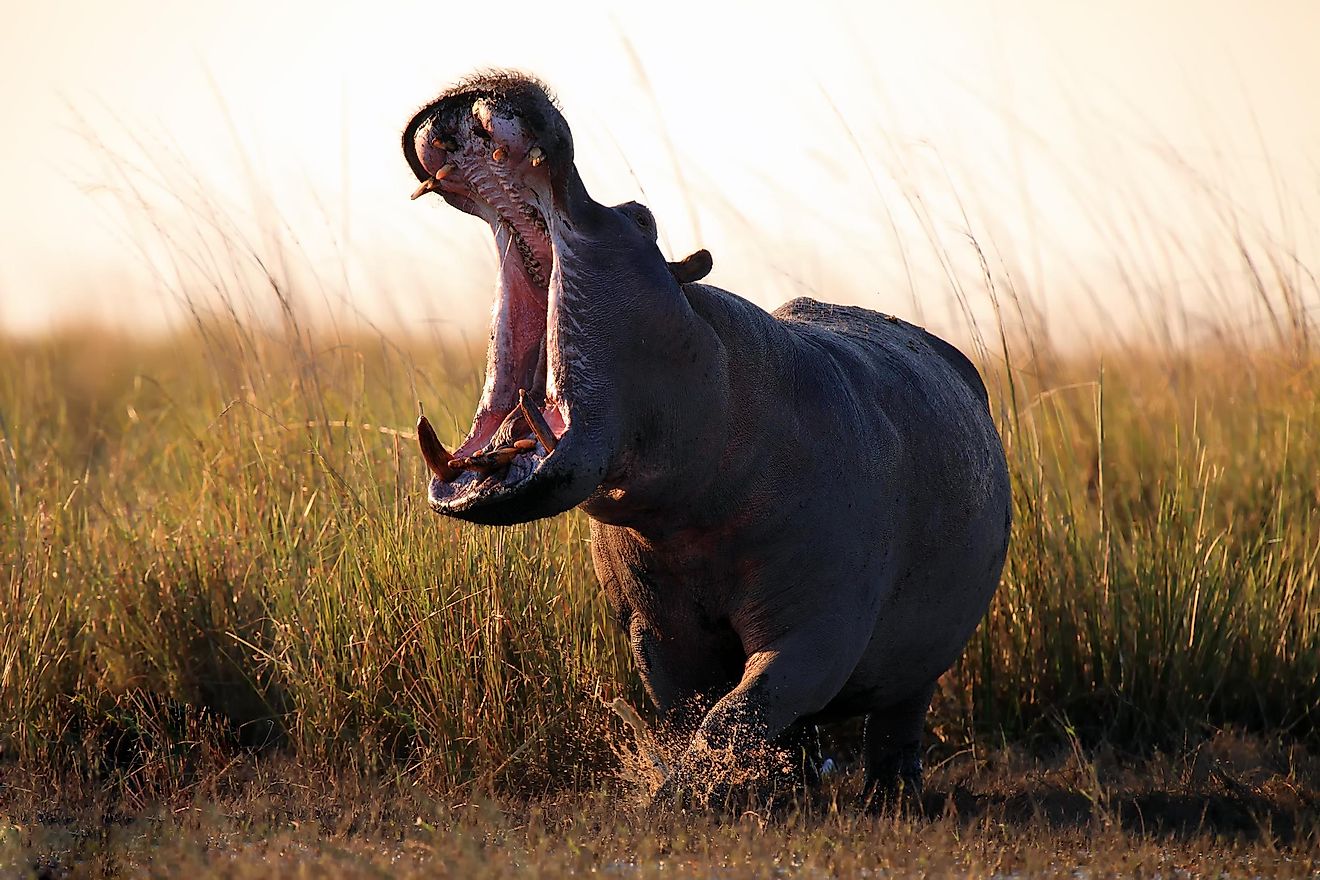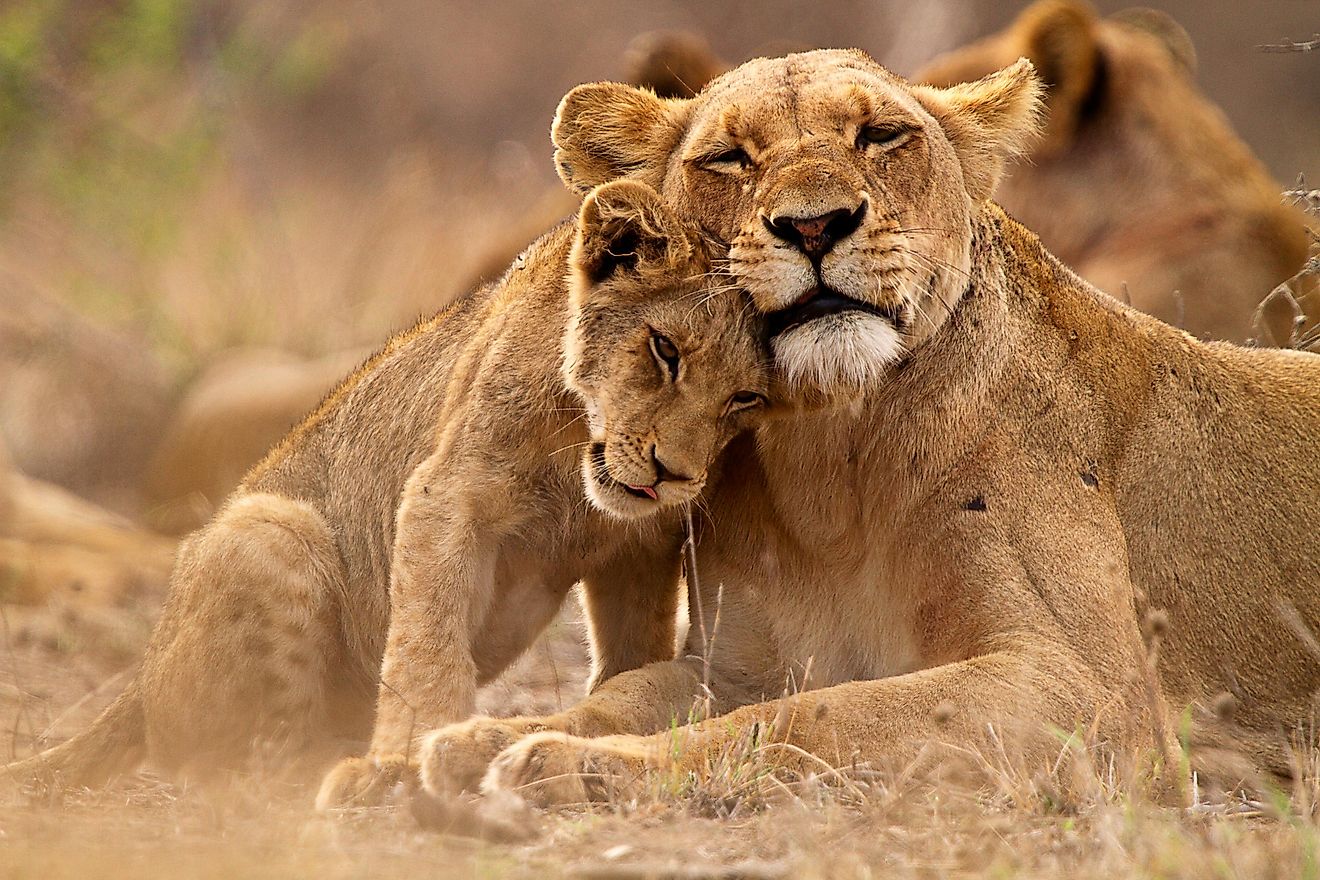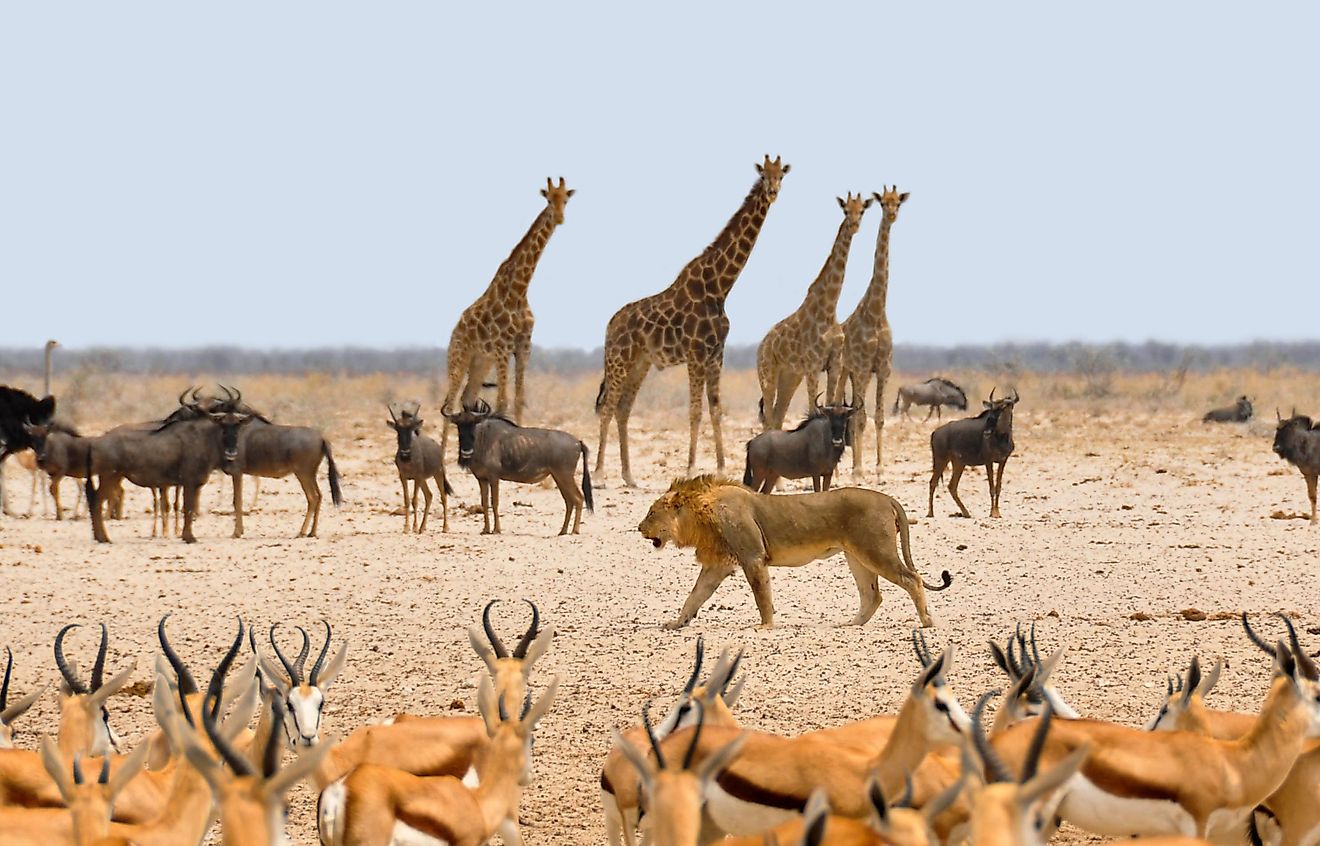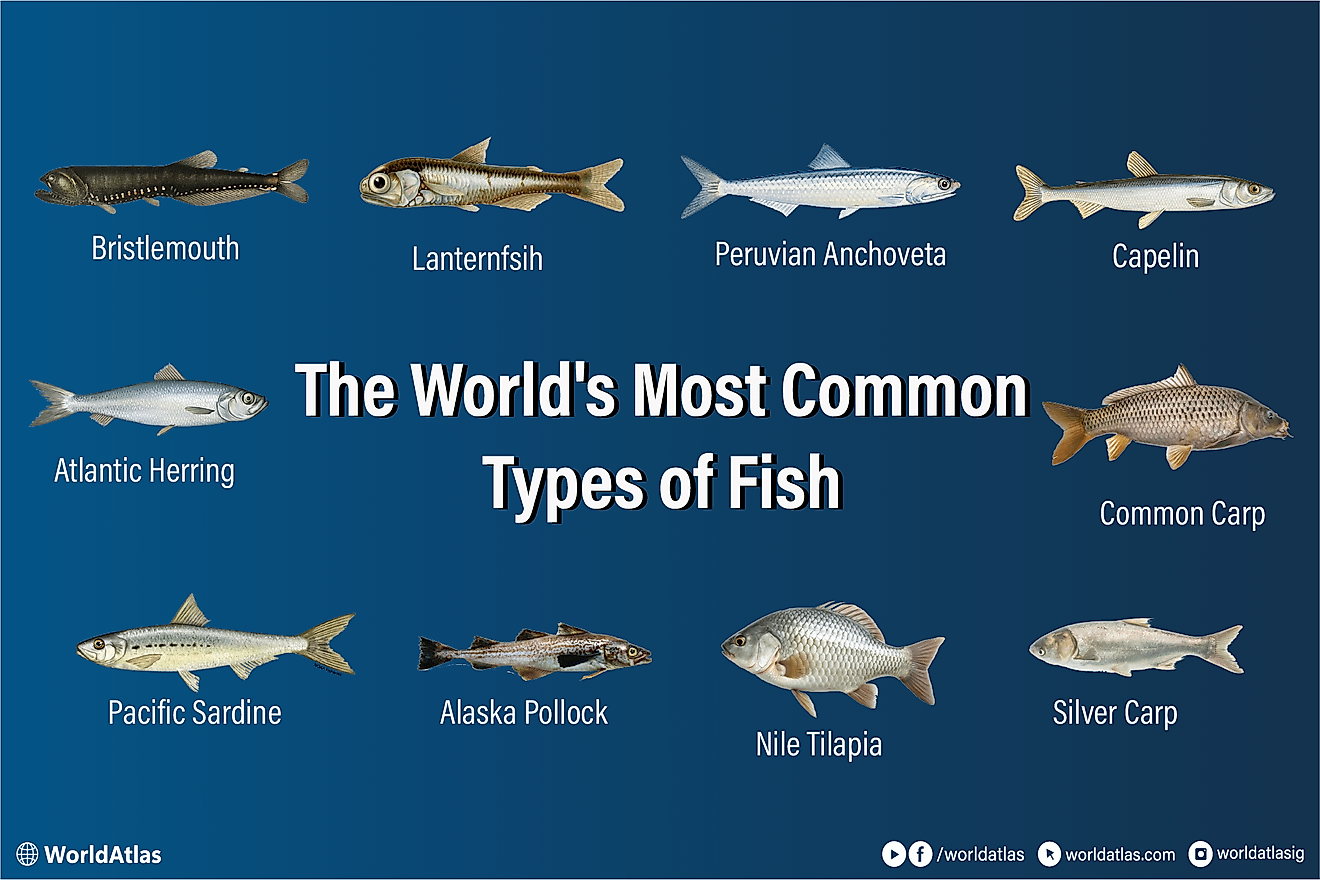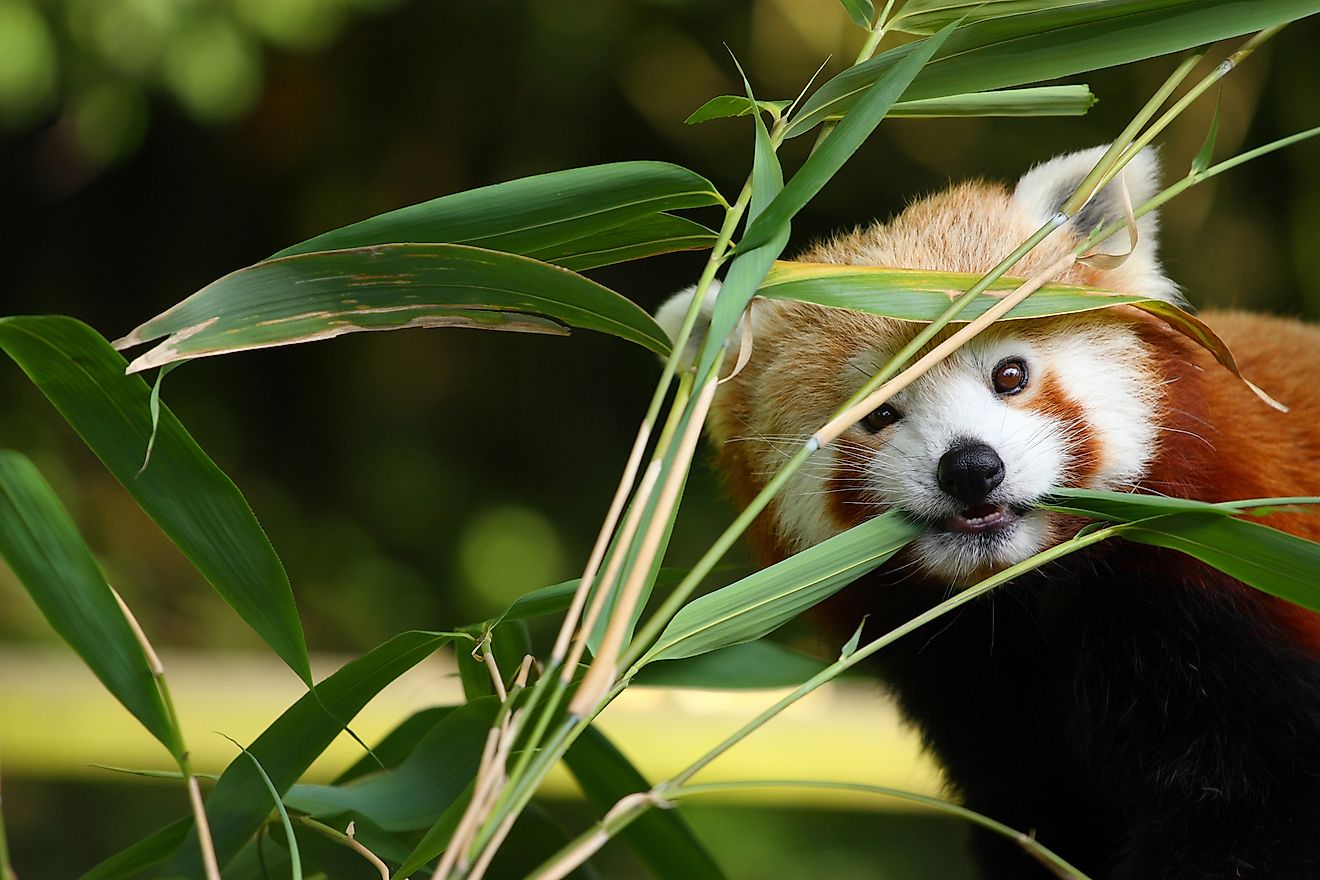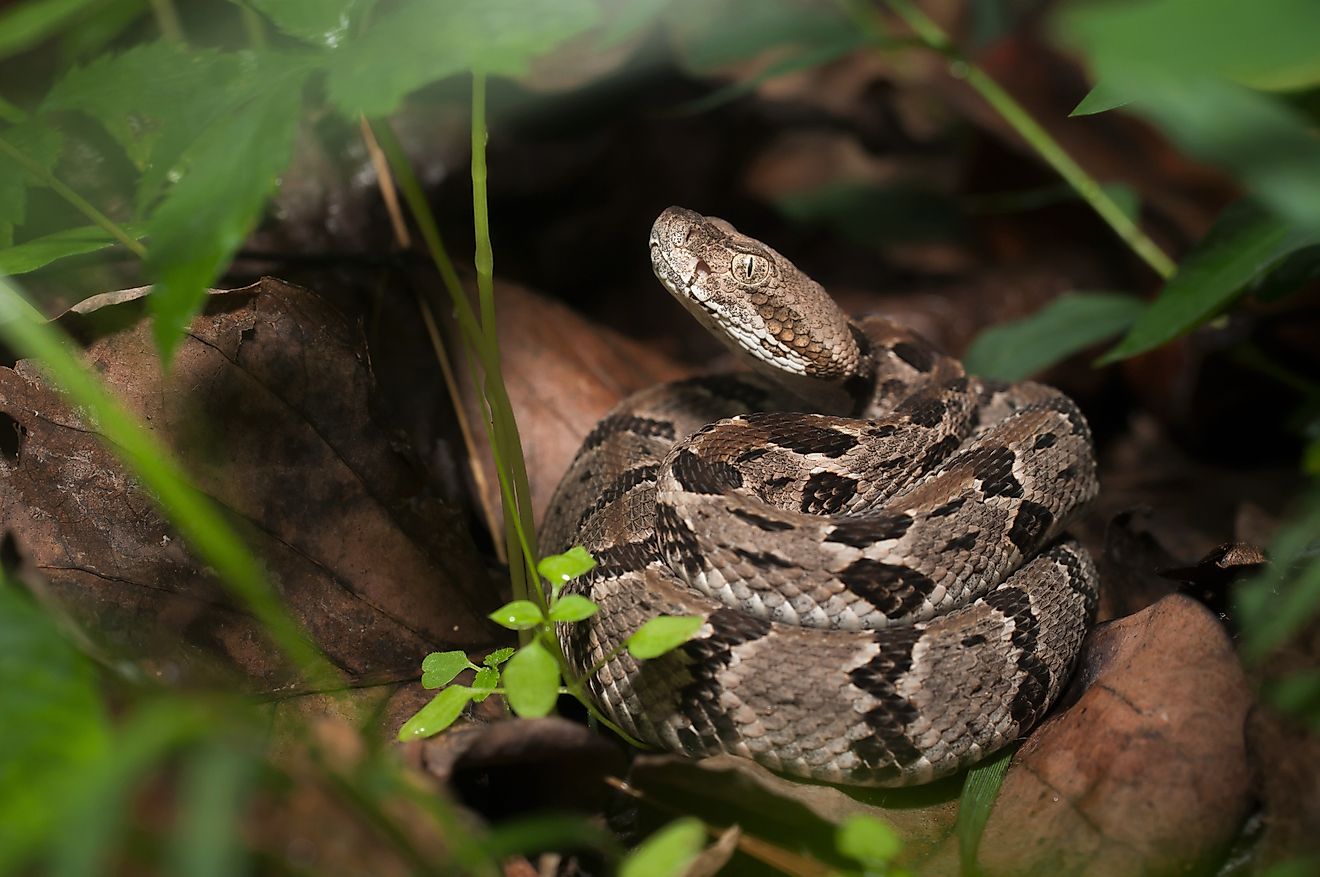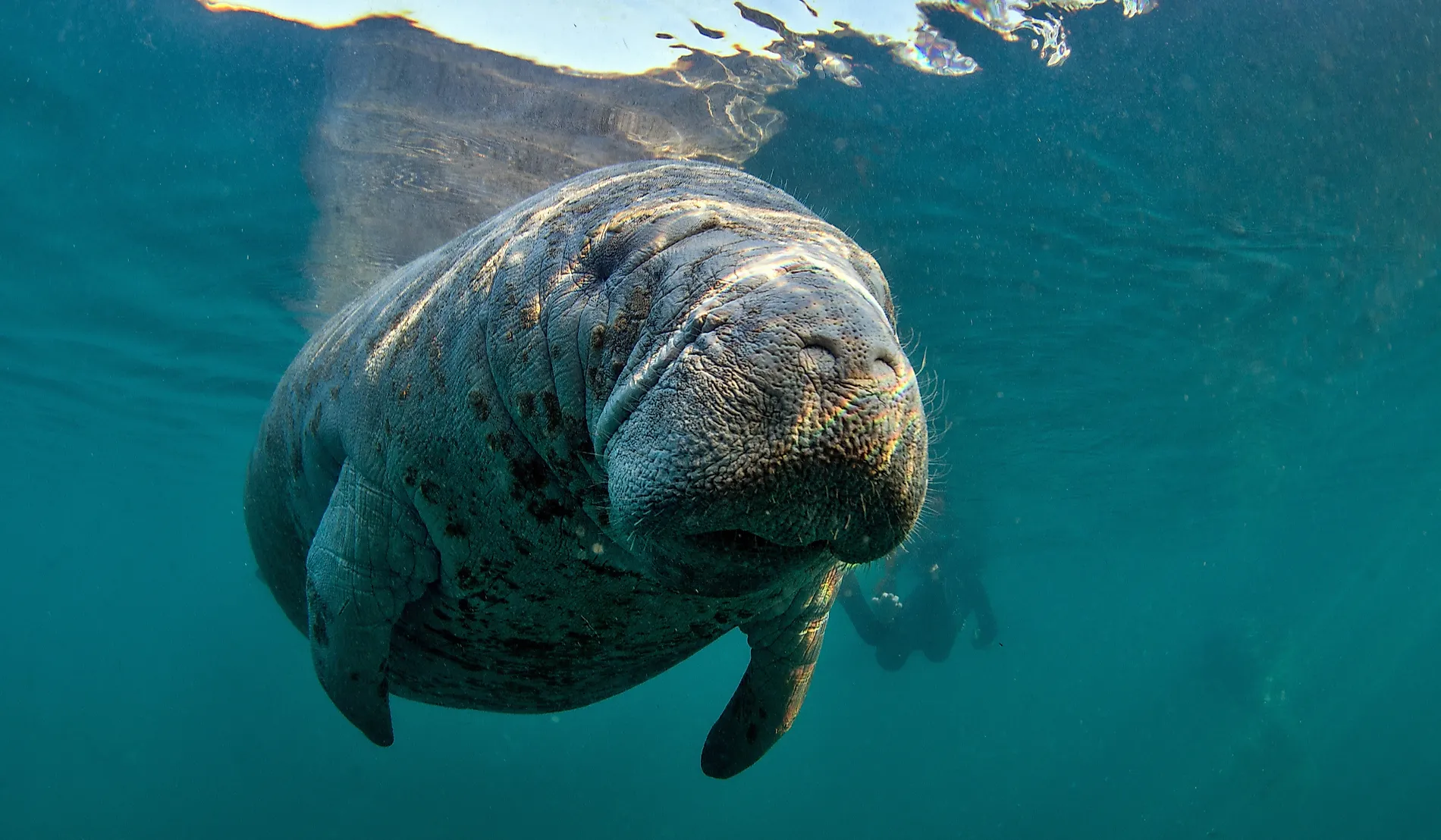
5 Endangered Animals Fighting For Survival In Mississippi
Mississippi is home to a rich diversity of wildlife, from coastal waters to upland forests. Yet for many of the state’s most unique and ecologically significant species, survival is far from guaranteed. Decades of habitat loss, human encroachment, climate change, and invasive species have pushed several native animals to the brink of extinction. These five species each represent a broader story about the challenges and opportunities in modern conservation. While the threats facing these species are complex, ongoing efforts by scientists, conservationists, and local communities offer hope for their recovery.
American Black Bear
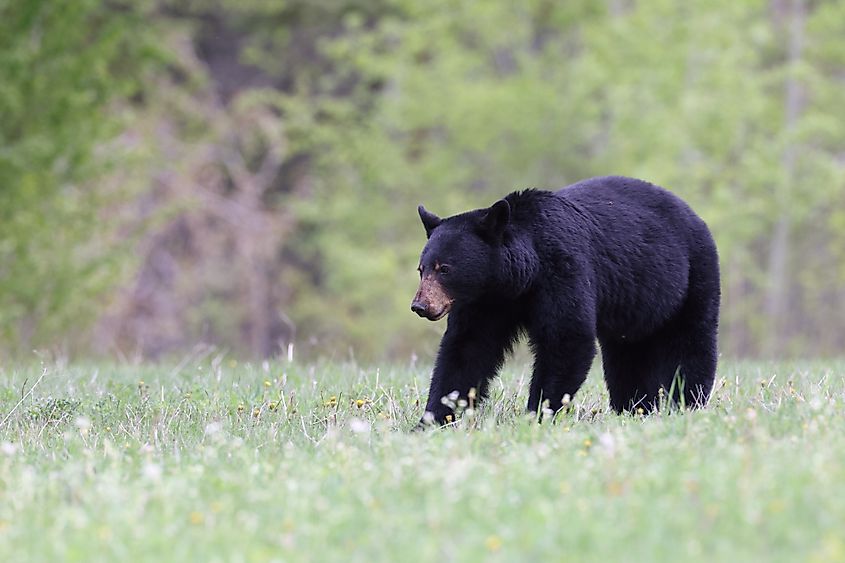
The American black bear’s decline in Mississippi stems largely from severe habitat loss and fragmentation. Historically dependent on the dense bottomland hardwood forests of the Mississippi Alluvial Valley, bears lost over 80% of this habitat by 1980 due to agricultural expansion and development. As forest cover shrank, so did viable bear territory, fragmenting populations and reducing genetic diversity. Though hunting was banned in 1932, habitat degradation continued to push bears toward local extinction. Black bears now occupy three core areas in the state: the Gulf Coast, the Loess Bluffs, and the Mississippi Delta. These regions offer a mix of mature forest, cutover areas, and wetlands, critical for providing food, shelter, and denning sites. Still, bears are elusive and tend to avoid areas heavily disturbed by humans, making connectivity between subpopulations essential for recovery.
One of the most significant conservation responses came in 2002 with the launch of the Mississippi Department of Wildlife, Fisheries, and Parks (MDWFP) Black Bear Program, housed at the Mississippi Museum of Natural Science. This long-term initiative focuses on research, public education, and conflict prevention. Since its inception, the program has monitored a promising rebound in the bear population, thanks in part to the return of female bears and confirmed births of cubs, a milestone not seen in decades. Today, the program continues to track bear movements, encourage habitat restoration, and support coexistence between humans and bears.
Ivory Billed Woodpecker
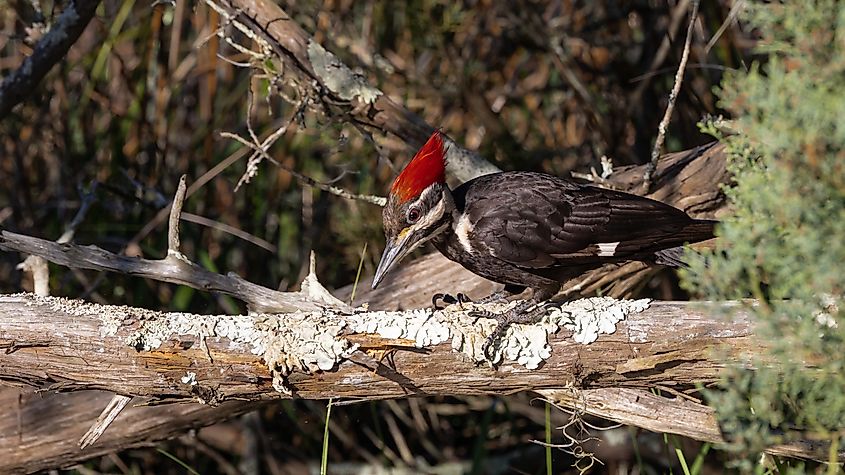
Once a striking symbol of the southeastern U.S.'s vast swampy woodlands, the Ivory-billed Woodpecker inhabited mature bottomland hardwood forests rich in decaying trees. In Mississippi, it was historically found in counties like Monroe, Yazoo, and Jackson, particularly near large river systems where old-growth forests provided both nesting cavities and a steady food source: beetle larvae from recently dead trees. These habitats, dominated by sweetgum, Nuttall oak, green ash, and cypress, were ideal for the woodpecker's specialized foraging behaviour. Sadly, extensive logging in the early 20th century decimated these ancient forests. As old-growth timber was cleared, the ivorybill’s habitat and food supply disappeared. Unlike other woodpeckers, it could not easily adapt to younger woodlands. With sightings dwindling after the 1940s, the bird has long been considered possibly extinct. Mississippi’s last credible report came during World War II near Rosedale, where a local naturalist observed several pairs.
Despite the grim outlook, hope remains. In a bold effort to reverse extinction, Colossal Biosciences has launched a de-extinction project aiming to revive the ivory-billed woodpecker. Using advanced genome sequencing and cloning techniques adapted for birds, the company is analyzing DNA from museum specimens and the species’ closest relatives. The long-term goal: reintroduce the bird to its historic range, including Mississippi, by restoring suitable habitat and reestablishing a viable population.
Mitchell's Satyr Butterfly
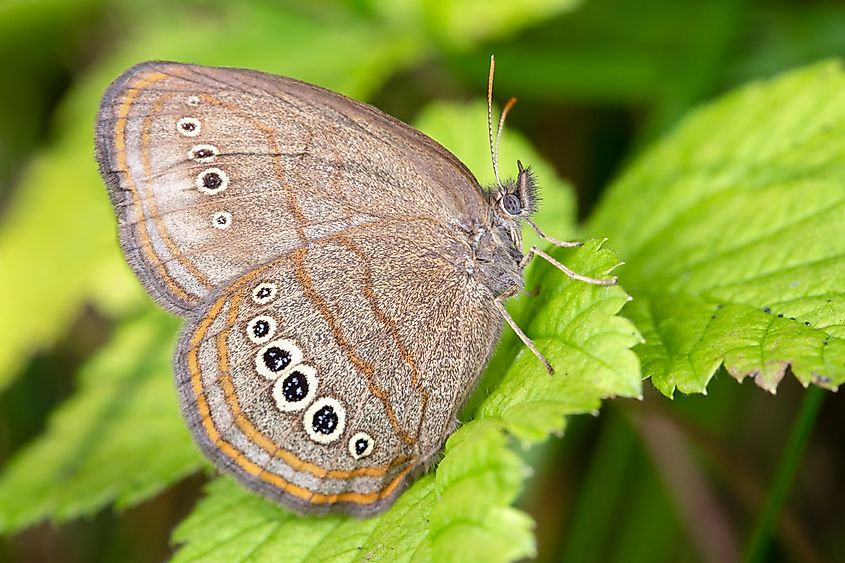
The Mitchell’s satyr butterfly is one of North America’s rarest butterflies. Recognizable by its warm brown wings and distinctive yellow-ringed eyespots, it thrives in wetland habitats like prairie fens and seepage slopes. In Mississippi, the species is found in a few northeastern counties, including Tishomingo, Prentiss, and Itawamba, where it inhabits lowland shrub-sedge marshes and forested swamps, often areas shaped by historic beaver activity. This butterfly depends on native sedges, such as Carex lurida and Carex crinita, as larval host plants and is often seen resting in shaded spots beneath sedges or shrubs. Unfortunately, decades of fire suppression, wetland drainage, and the early 20th-century decline of beavers have drastically reduced the Mitchell’s satyr’s suitable habitat. Its sedentary nature and narrow habitat preference make it particularly vulnerable to landscape changes.
Efforts to restore the butterfly’s habitat are underway across its limited range. The Nature Conservancy’s Grand River Fen Preserve in Michigan hosts one of the largest remaining populations. Here, land managers use controlled burns and invasive species removal to revive native plant communities essential to the satyr’s survival. In 2021, a collaborative relocation effort led by the U.S. Fish and Wildlife Service introduced butterflies from Grand River Fen to Park Lyndon, expanding their range into restored fen habitat. Additionally, the Mississippi Entomological Museum houses several specimens being used in ongoing genetic and morphological research on this butterfly. These restoration and translocation efforts offer a hopeful model for recovery in Mississippi. Protecting seepage slopes, encouraging beaver recolonization, and reintroducing fire into the landscape are all vital strategies to help ensure the Mitchell’s Satyr does not vanish from the South entirely.
Southern Hognose Snake
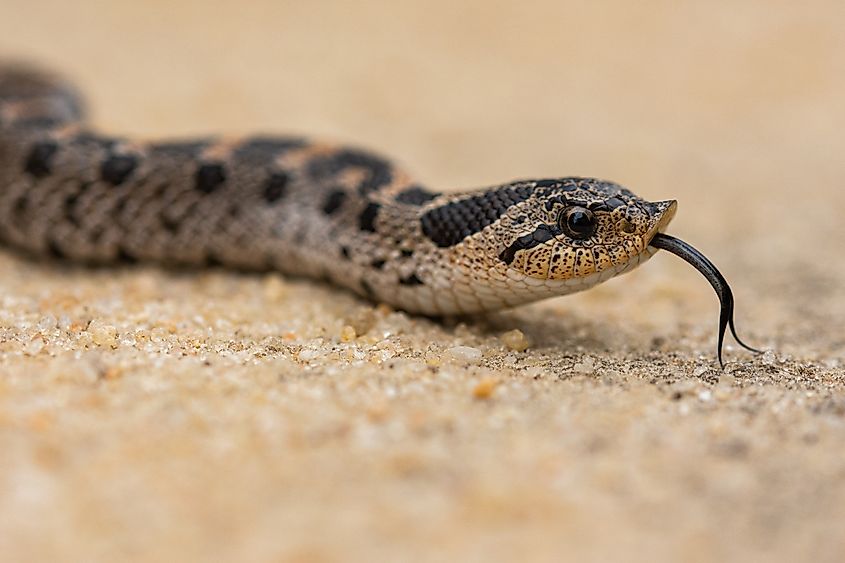
The southern hognose snake, once common in parts of the southeastern U.S., is now among the region’s rarest reptiles. Short and stout, this harmless snake is recognized by its upturned snout and patterned scales of gray, brown, or reddish hues. Historically, it ranged from southeastern North Carolina to central Florida and west to Mississippi, where it was last recorded in counties like Forrest and Pearl River. This snake depends on open, fire-maintained habitats with deep, sandy soils, especially longleaf pine ecosystems, which once covered millions of acres across the Gulf Coast. These forests provided ideal shelter and hunting grounds.
However, fire suppression, urban development, and pine plantation conversion have destroyed over 97% of these habitats, fragmenting populations and accelerating decline. Additional pressures, such as vehicle strikes, predation by invasive fire ants, and illegal pet trade collection, have compounded the species' rapid disappearance. In a major step toward conservation, the Center for Biological Diversity won a legal agreement requiring the U.S. Fish and Wildlife Service to reconsider protections under the Endangered Species Act. The agency had denied protections in 2019 despite alarming declines. Now, a new decision is expected by August 2025. Advocates hope this will lead to habitat restoration and legal safeguards to prevent extinction.
West Indian Manatee
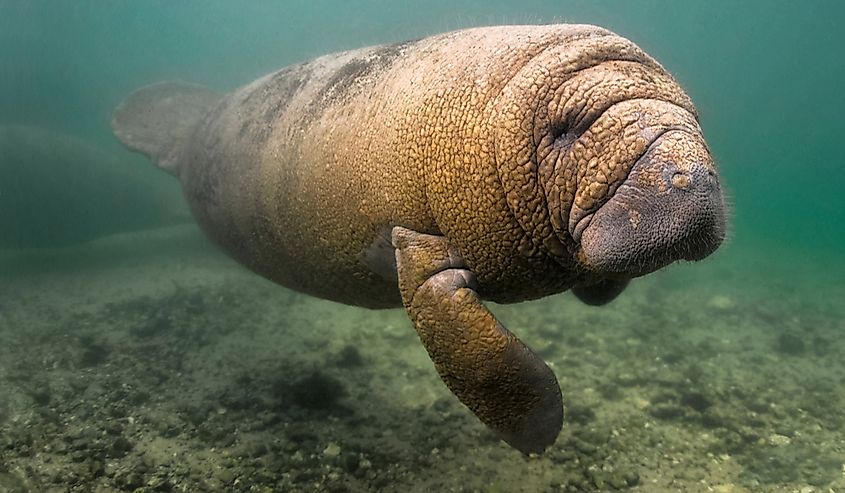
The West Indian manatee is a gentle, slow-moving aquatic mammal found in warm coastal and inland waters. Measuring up to 13 feet long and weighing nearly 2,000 pounds, manatees inhabit rivers, estuaries, and shallow coastal zones throughout Florida, the Gulf of Mexico, and the Caribbean. In Mississippi, sightings have been recorded along the Gulf Coast, with manatees sometimes venturing as far west as Louisiana. These mammals are highly adaptable, moving between fresh and saltwater environments, and can travel long distances, up to 850 kilometres, to reach warmer winter habitats. However, their numbers have plummeted due to centuries of overhunting, habitat loss, and increasingly, boat collisions. Today, fewer than 1,400 manatees are estimated to remain in U.S. waters. Though hunting has largely stopped, manatees now face modern threats, including watercraft strikes, entanglement in fishing gear, and being crushed in flood control structures or power plant intakes.
Conservation groups like the National Wildlife Federation (NWF) are leading efforts to protect these vulnerable animals. Partnering with local, state, and federal agencies, the NWF works to improve water quality, restore vital seagrass beds, and raise awareness among boaters about manatee-safe practices. Education campaigns help inform communities how to reduce harm to manatees by slowing boat speeds and avoiding critical habitats. Boat strikes remain a primary danger; nearly all adult manatees bear scars from propellers, with some hit repeatedly. These injuries can be life-threatening and cause long-term health issues. With coordinated action and habitat protection, there is still hope that these iconic “sea cows” can continue to roam Gulf waters, including the quieter estuaries of coastal Mississippi.
Protecting Mississippi’s Wild Future
The future of Mississippi’s rare wildlife depends on more than chance; it relies on awareness, action, and a shared commitment to conservation. From the elusive ivory-billed woodpecker to the gentle West Indian manatee, each of these species plays a role in the state’s ecological story. Protecting them means preserving the habitats they depend on and addressing the threats they face, from pollution to climate change. With continued research, stronger protections, and public support, there is still time to ensure these extraordinary animals remain a living part of Mississippi’s natural heritage.
